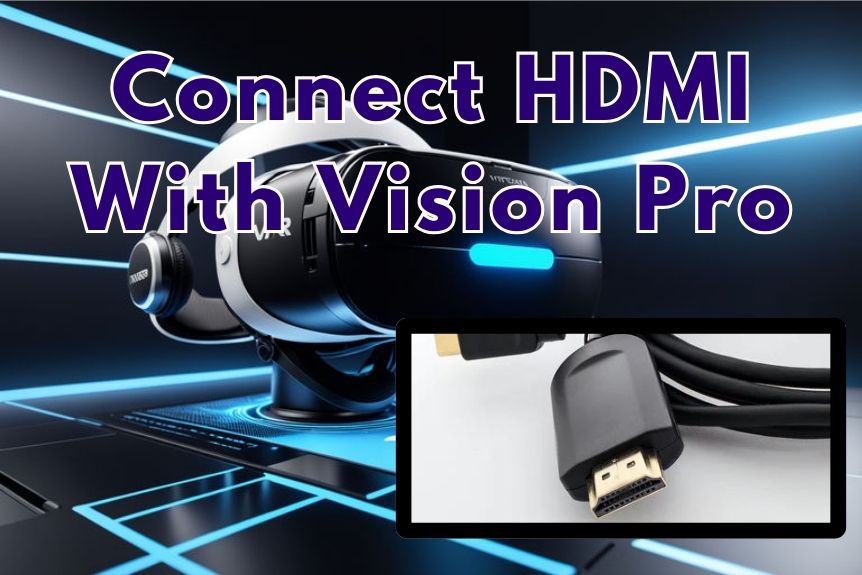Have you ever wondered if connecting HDMI with Vision Pro is as straightforward as it seems?
While many may think it’s a simple plug-and-play process, there are important steps and considerations that can greatly impact the quality of your video streaming experience.
By exploring the intricacies of setting up this connection properly, you can access the full potential of your Vision Pro device and HDMI capabilities.
Understanding the nuances of this integration could be the key to achieving seamless and high-quality video output for your content creation or streaming needs.
Required Hardware and Software for Connection
To establish a successful connection between HDMI and Vision Pro, you’ll need specific hardware and software components in place. For HDMI NDI encoding supporting 4K60 on Apple Vision Pro, consider using a reliable encoder like the Kiloview N40.
To monitor HDMI connections, opt for NDI monitoring apps such as Vxio on your Vision Pro device.
Make sure that your network bandwidth can sustain 250-300mbps to facilitate high-quality video streaming. Keep in mind that there might be a latency of approximately 50ms due to encoding and decoding processes.
If needed, adjust the encoder settings to optimize streaming quality on your Vision Pro setup.
Setting Up HDMI Input on Vision Pro
For seamlessly setting up HDMI input on your Vision Pro, initiate the process by connecting your HDMI source to the NDI Encoder, such as the Kiloview N40 for 4K60 support on Apple Vision Pro.
Make sure that your network bandwidth can handle 250-300mbps to facilitate high-quality video streaming. Bear in mind that there will be a slight delay of approximately 50ms due to the encoding and decoding processes. If necessary, adjust the encoder settings to guarantee smoother streaming quality.
Before displaying the source on the Vision Pro, configure network permissions to allow the transmission through the Vxio app. This app will enable you to select the HDMI source for display, completing the setup process.
Configuring Audio and Video Settings
Consider adjusting the audio queue size in the Vxio app to enhance synchronization between audio and video signals for best performance. To further optimize your setup, opt for using UDP instead of Multi-TCP, especially in congested Wi-Fi environments, to elevate your streaming quality.
For a more flexible and portable configuration, integrate a mini router like the GL.iNet Beryl AX. Guarantee compatibility with HDCP-protected HDMI sources to prevent operational interruptions.
Additionally, be prepared to adapt to various aspect ratios to maintain the visual integrity of the streamed content. By implementing these adjustments, you can maximize the potential of your Vision Pro system and achieve a seamless audio-visual experience.
Troubleshooting Common Connection Issues
If experiencing connectivity issues with your HDMI setup, thoroughly examine the integrity of the cable connections first. Check for any loose or damaged cables that may be impeding the transmission of the HDMI signal. Make sure that the HDMI source device, such as a laptop or gaming console, is powered on and actively transmitting a signal. Confirm that the correct HDMI input source is selected on the Apple Vision Pro monitor to guarantee the display is receiving the signal from the right source.
If problems persist, try restarting both the HDMI source device and the Apple Vision Pro for a fresh connection attempt. Additionally, troubleshooting potential port issues by connecting the HDMI source to a different input port on the Vision Pro could help identify if the problem lies with a specific port.
Maximizing Performance With HDMI and Vision Pro
Maximize your HDMI and Vision Pro performance by utilizing an HDMI NDI Encoder like Kiloview N40 for seamless 4K60 support. To guarantee you’re getting the best out of your setup, follow these tips:
- Use Vxio app or other NDI monitor apps on Vision Pro for HDMI input monitoring.
- Verify your network bandwidth can handle 250-300mbps for high-quality 4K60 HDMI streaming.
- Anticipate around 50ms latency due to encoding and decoding processes.
- Adjust encoder settings for a smoother streaming experience if needed.
